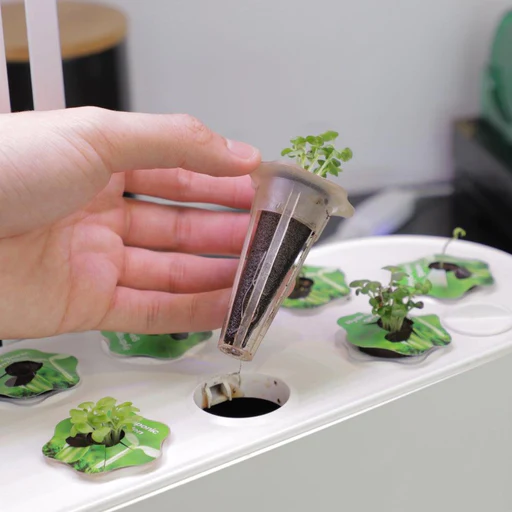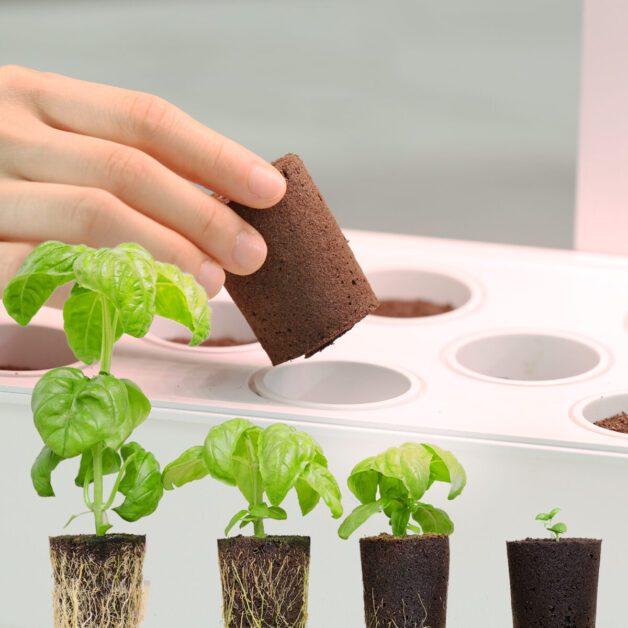Selecting the Perfect Hydroponic Grow Sponge for Healthy Plants
15
Gardening is a wonderful and rewarding hobby that can bring joy and beauty to your life. Whether you have a small backyard or a spacious garden, there are countless possibilities to explore. One popular method that has gained traction among gardening enthusiasts is hydroponics. This innovative technique allows plants to grow without soil, using water or a nutrient-rich solution instead.

Hydroponics offers several advantages over traditional soil-based gardening. For starters, it allows for precise control over the growing conditions, such as pH levels and nutrient concentrations. This means that plants can receive exactly what they need, resulting in faster growth and higher yields. Additionally, hydroponics eliminates the risk of soil-borne diseases and pests, as well as the need for frequent weeding. It also requires less water compared to conventional gardening methods, making it a more sustainable option.
• Precise control over growing conditions such as pH levels and nutrient concentrations
• Faster growth and higher yields due to plants receiving exactly what they need
• Elimination of risk of soil-borne diseases and pests
• Reduced need for frequent weeding
• Less water consumption compared to conventional gardening methods
Here is a table that shows us some of the advantages of hydroponic grow sponge:
| Advantage | Description |
|---|---|
| 1. Water Retention | Hydroponic sponge growing mediums are porous and can retain water without becoming too heavy for plant roots. This ensures consistent hydration for plants. |
| 2. Affordability | Sponges are affordable and readily available, making them a cost-effective choice for hydroponic systems. |
| 3. Lightweight and Easy to Work With | Sponges are lightweight and easy to handle during planting and maintenance. They provide a convenient substrate for plant growth. |
| 4. Versatility | Hydroponic sponges support a wide variety of plant species, including leafy greens, herbs, and flowering plants. Their porous structure promotes healthy root development. |
What are the main points to consider when writing an article?
When writing an article, it is important to have a clear and concise headline, provide relevant and accurate information, structure your content using headings, include supporting evidence or examples, and proofread for grammatical errors.
What is the purpose of article headings?
Article headings serve as a guide for readers, helping them navigate through the content and understand the main points being discussed in each section.
How many headings should an article typically have?
The number of headings in an article can vary depending on the length and complexity of the content. However, it is generally recommended to have at least three to five headings for better organization.
Why is it important to maintain a professional tone in articles?
Maintaining a professional tone in articles helps establish credibility and ensures that the information presented is taken seriously by readers. It also reflects the author’s expertise and professionalism.
How can I ensure my article is well-structured?
To ensure your article is well-structured, start with a clear introduction, use headings to organize your content, present information in a logical order, provide supporting evidence or examples, and end with a conclusion that summarizes the main points.
Should I include evidence or examples in my article?
Yes, including evidence or examples in your article can help support your claims and make your content more credible. It provides readers with real-life situations or data to better understand the topic being discussed.
What is the importance of proofreading an article?
Proofreading is crucial to ensure that your article is free from grammatical errors, typos, and inconsistencies. It helps maintain the quality and professionalism of your writing.
How can I make my article more engaging for readers?
To make your article more engaging, you can use a conversational tone, include relevant anecdotes or personal experiences, ask thought-provoking questions, and use visual aids such as images or graphs to enhance the presentation.
Can I use informal language or slang in my article?
It is best to avoid using informal language or slang in articles that aim to maintain a professional tone. Such language can undermine the credibility and professionalism of the content.
Is it necessary to cite sources in my article?
Citing sources is important to give credit to the original authors or researchers, provide evidence for your claims, and avoid plagiarism. It adds credibility and allows readers to verify the information presented.
How can I ensure the uniqueness of my article’s FAQs?
To ensure the uniqueness of your article’s FAQs, focus on providing new and relevant information that has not been previously discussed in the article. Avoid repeating points or duplicating information already covered.
Can I include personal opinions in my article?
Including personal opinions in articles is generally discouraged, especially in professional contexts. It is important to present factual information and allow readers to form their own opinions based on the evidence provided.
Should I include a conclusion in my article?
Yes, including a conclusion in your article helps summarize the main points discussed and provides a sense of closure. It allows readers to reflect on the information presented and reinforces the key takeaways.
How long should an article typically be?
The length of an article can vary depending on the topic, purpose, and publishing platform. However, a typical article can range from 500 to 2000 words, depending on the depth of coverage required.
Can I use bullet points or numbered lists in my article?
Yes, using bullet points or numbered lists can help break down information into concise and easily readable format. They can be particularly useful when presenting step-by-step instructions, key points, or summarizing information.







